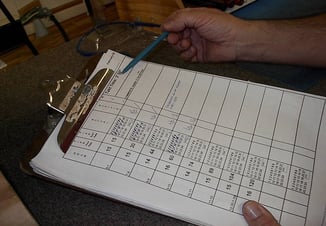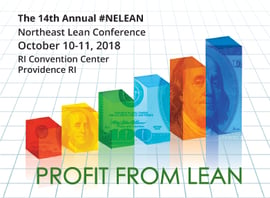A Blog About Understanding The Toyota Production System and Gaining Its Full Benefits, brought to you by "The Toast Guy"

Who is Accountable?
 Leader Standard Waste Part Two (Did you miss Part One? Read it here.)
Leader Standard Waste Part Two (Did you miss Part One? Read it here.)
Many years ago, TSSC introduced to my factory a visual measurement device referred to as a production activity log (PAL), also known to some as an hour-by-hour chart. Posted at the last operation of a particular process, the PAL provided an up-to-the-minute accounting and hourly summary of actual production quantity versus plan. The far right column of this report contained the most important information regarding the process health. If the actual rate in any hour deviated either high or low from the plan, the cell lead was accountable to report the problem and either remediate the cause or flag for additional assistance. Causes for deviations, either high or low, were innumerable: missing parts, missing operations, defective parts, broken fixtures, incorrect drawings to name just a few. As V.P. of manufacturing, I was accountable to review the PAL documents daily to assure overall process health. My job was to confirm that the area supervisors were able to address problems as they occurred. We didn’t call it Daily Management and we didn’t use the word “accountability, but it bore strong resemblances to both of these.
Shortly after implementing the PAL, I was chastised by TSSC’s consultant: “If you looked at the PAL,” he said, “you’d see that problems are not being fixed. If you don’t care, no one will waste their time reporting.” At the consultant’s insistence I began to visit and initial PAL’s every hour, an activity that was stressful for me, but also incredibly informative. As I paid closer attention, a few previously unnoticed accountabilities quickly became apparent:
- Design engineering was accountable to provide a basic work standard and drawings detailing the specifications, dimensions, and features of the part or product. When these were wrong or incomplete, production became guesswork and rework. Too often, this particular problem did not get fixed for a long time, or ever. Not until I visited that actual place where the problem occurred did I grasp the significance of “incorrect bill of material” messages.
- No one seemed to be accountable to provide fundamental skills training to team members that were needed to do the work. Skills like welding or soldering, for example, were not always adequately provided, creating safety and quality problems. Ultimately, this observation led to greater care in qualifying special skills – no more OJT. What might have been listed on the PAL problem column as “scrapped part” took on a much deeper significance when I was able to ask “Why?”
- Industrial engineers were accountable to develop and improve standardized work to balance the production rate to customer need and to confirm new standards with team members. What I learned, when I looked more closely was that the various artifacts of standardized work were not always aligned with actual production and were not kept up to date. So-called “standard WIP” was not standard; sometimes there was a pile in front of an operation, other times nothing. In particular, the standardized work chart, which supposedly provided a visual image of the standard, was frequently out of date.
- Area supervisors were accountable to visit at least hourly to provide support for problems that occurred in the previous hour. (Now I was doing this also in order to show commitment to the process.) Supervisors bristled at the idea that they were supposed to fix problems. “Every hour we have problems,” an angry supervisor told me, “and most of them I can’t fix.”
So what does this have to do with the visual controls on huddle boards; the red and green dots that enable managers to assess the process health “at a glance”? Several things:
- First, if I, as a senior manager, had not gone to the actual Gemba, I would have remained woefully misinformed about process health. All of the missed accountabilities noted above would have been summarized into red dots.
- Secondly, if I had not followed the process health on an hourly basis, I would have failed to grasp the importance of fixing problems instantly. They would have been batched for a daily huddle – and many likely would have been forgotten.
- Third, if I had not shown a commitment to understand the problems, as my TSSC consultant said, the front line would not have wasted time reporting them. They would have just muddled along -- SOS.
In 1995, we referred to the huddle board as a “production board,” and it provided a valuable periodic summary of quality, cost, and delivery, often capturing trends that would not have been apparent on daily charts; for example, delays occurring at the start of a shift or the start of week, or part shortages occurring at end of month. But, for breaking news, we went to the Gemba – the real place. And this is my concern about visual accountability as I often see it practiced today: It’s all about the huddle boards. When they are the only visual devices used by management, then the workplace becomes essentially invisible. (Incidentally, a quick read of David Mann’s book, will indicate that he intends huddle boards to be one of many visual devices, all of which must be functioning properly for the huddle boards to have any meaning.)
As part of your leader standard work, do you get out to the real place frequently to “sustain new behavior” or do you simply visit the huddle board and risk sustaining the old behavior?
Please send me your thoughts.
O.L.D.

By the way: The TSSC consultant who took me to the woodshed in 1995 has just been added to the agenda and will be speaking at our October 10-11 Northeast Lean Conference in Providence, Rhode Island. Bryant Sander’s topic will be... Daily Management : ) I can't wait and I really hope to see you there.